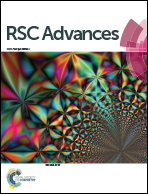Accurate determination of the size distribution of Si nanocrystals from PL spectra
Abstract
Narrow size distribution of quantum dots (QDs) is needed for their application in photovoltaics but collection of such information is difficult. Many experiments have shown the photoluminescence (PL) spectrum of Si QDs will broaden and peak position is size dependent. However, there is still lack of quantitative analysis of such phenomenon. In this paper, a model is developed to fit the PL spectrum based on spontaneous emission and the size distribution of the QDs. With this model, we can quantitatively analyse the QD size and its distribution using the PL spectra only, saving the need of time consuming and destructive characterization methods such as transmission electron microscopy (TEM). The optical bandgap can be extracted naturally from this PL model. The size and distribution of the QD which are obtained by fitting the PL spectra are then confirmed by measurements using TEM and XRD.


 Please wait while we load your content...
Please wait while we load your content...